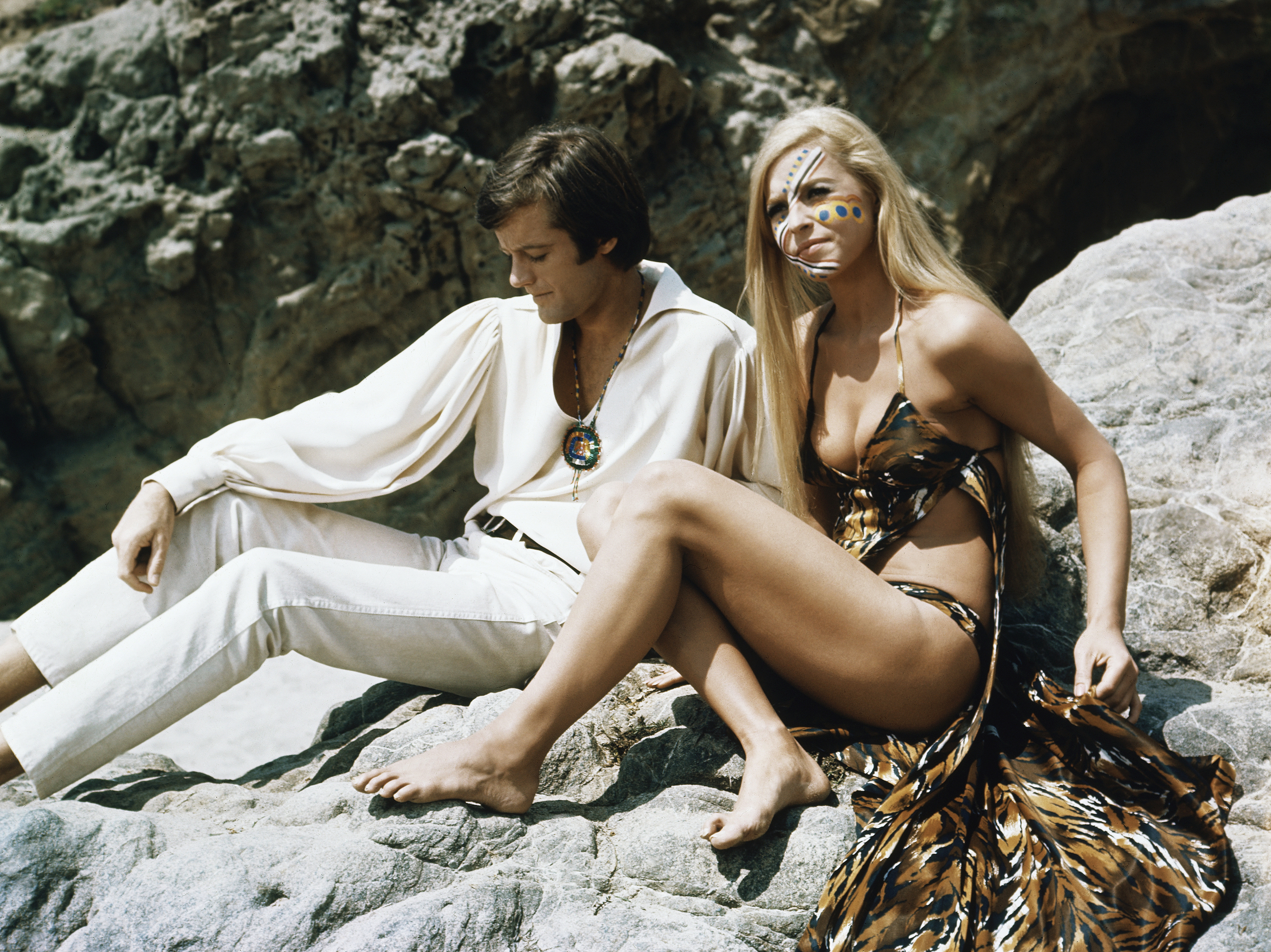Roger Corman, The B-Movie Legend Who Launched A-List Careers, Dies At 98 : NPR
Cult film director Roger Corman often came up with titles before he came up with plots. His 1957 movie Attack of the Crab Monsters is one example — “I had no story,” Corman told NPR’s Renee Montagne in 2010.
Movie Poster Image Art/Getty Images
hide caption
toggle caption
Movie Poster Image Art/Getty Images
Over the course of his half-century long career, Roger Corman filled America’s drive-ins with hundreds of low-budget movies. They had titles like Sharktopus, Teenage Doll and The Terror. The trailers — and titles — were often better than the movies themselves.
But Corman was also a major figure in American independent film. The directors and actors who worked with him at the beginnings of their careers are a veritable who’s who: Robert De Niro, Martin Scorsese, Jonathan Demme, Francis Ford Coppola.

“I think the task of the filmmaker is to break through and hit that horror that still remains in the unconscious mind,” Corman said. “And there’s a certain amount of catharsis there. He’s pictured above in 2009.
Kevork Djansezian/Getty Images
hide caption
toggle caption
Kevork Djansezian/Getty Images

“I think the task of the filmmaker is to break through and hit that horror that still remains in the unconscious mind,” Corman said. “And there’s a certain amount of catharsis there. He’s pictured above in 2009.
Kevork Djansezian/Getty Images
Corman died Thursday at his home in Santa Monica, California, according to a statement released Saturday by his wife and daughters. “He was generous, open-hearted and kind to all those who knew him,” the statement said. “When asked how he would like to be remembered, he said, ‘I was a filmmaker, just that.'” He was 98.
Corman was educated at Stanford and Oxford Universities before he became the dean of grindhouse. Back in 1990, Corman told NPR about making his first film, Monster from the Ocean Floor. It was the early 1950s, and Corman had read in the newspaper about a company that had invented a miniature submarine.
“I finished breakfast, called them up, said I was an independent filmmaker and would be interested in having their submarine in my picture,” he recalled.
Putting free stuff in the flicks he pumped out for cheap became Corman’s trademark — along with little-known starlets in even littler outfits, filmed on the littlest of budgets. Corman’s thrift was legendary.

Dick Miller acted in dozens of Corman films, including the 1955 Western Apache Woman. “I played an Indian in my first picture and about halfway through [Corman] asked me … Would you like to play a cowboy?” Miller remembered in a Fresh Air interview in 2004. “I said, Doing another movie already? He says, No, in the same movie. So I ended up playing a cowboy and an Indian in my first movie.”
Corman released as many as eight pictures a year — a breakneck pace that rivaled even major studios. Once, as a joke, he borrowed a set (for free, of course) and shot a movie in two days and one night. That hastily assembled movie was the original, black and white, Little Shop of Horrors.
“Possibly the fast pace, the insane schedule, brought something to the picture that made it the more-or-less cult film it became,” Corman said.

Some of Hollywood’s biggest stars got their starts working on Corman films. Above, Salli Sachse and Peter Fonda are pictured on the set of The Trip, a 1966 film written by Jack Nicholson and directed by Corman.
AP
hide caption
toggle caption
AP

Some of Hollywood’s biggest stars got their starts working on Corman films. Above, Salli Sachse and Peter Fonda are pictured on the set of The Trip, a 1966 film written by Jack Nicholson and directed by Corman.
AP
Of course, it didn’t hurt that the film featured a young Jack Nicholson playing a masochistic dental patient.
Nicholson showed up in a raft of Corman pictures, including a relatively well-regarded series based on works by Edgar Allan Poe, all starring Vincent Price.
But Corman was mostly synonymous with schlock — there was The Student Nurses in 1970 (followed by several subsequent nurse-focused films), the 1966 biker gang movie The Wild Angels, and 1975’s homicidal hot rod movie Death Race 2000.
“The drivers are scored not only on how fast they can drive, and how many other drivers they could hit, but also how many pedestrians they could kill,” Corman bragged. “Now that was the key. The picture was the biggest success we had, ever, and it led to all kinds of jokes that entered our era.”
Corman received an honorary Oscar in 2009 for producing and directing more than 300 films and fostering the careers of Ron Howard, John Sayles, Sylvester Stallone and James Cameron.
“Probably all of his movies combined would not have cost as much as Avatar,” Cameron told NPR in 2010.

Corman produced Cameron’s first full-length feature, 1981’s Piranha II: The Spawning, and taught him an essential lesson: “Your will is the only thing that makes the difference in getting the job done …” Cameron said. “It teaches you to improvise, and, in a funny way, to never lose hope. Because you’re making a movie, and the movie can be what you want it to be.”
The movies Corman willed into being are their own loopy, glorious world of teenage cavemen, X-ray eyes and humanoids from the deep. His 300-some movies barely even rose to the level of camp. But many of Hollywood’s most respected directors have at least one Corman credit buried in their resumes. And by teaching so many people how to deliver on-budget and on-schedule, Corman was arguably one of the most influential figures of American film.
In 1964 he married Julie Halloran, a UCLA graduate who also became a producer. He is survived by his wife Julie and children Catherine, Roger, Brian and Mary.
Source link
